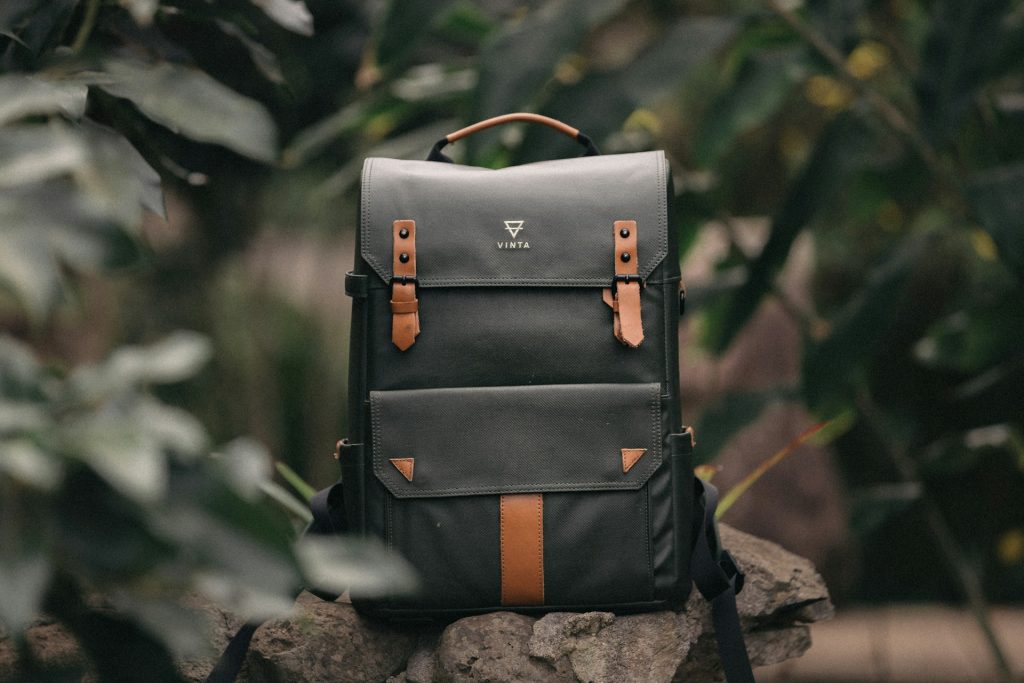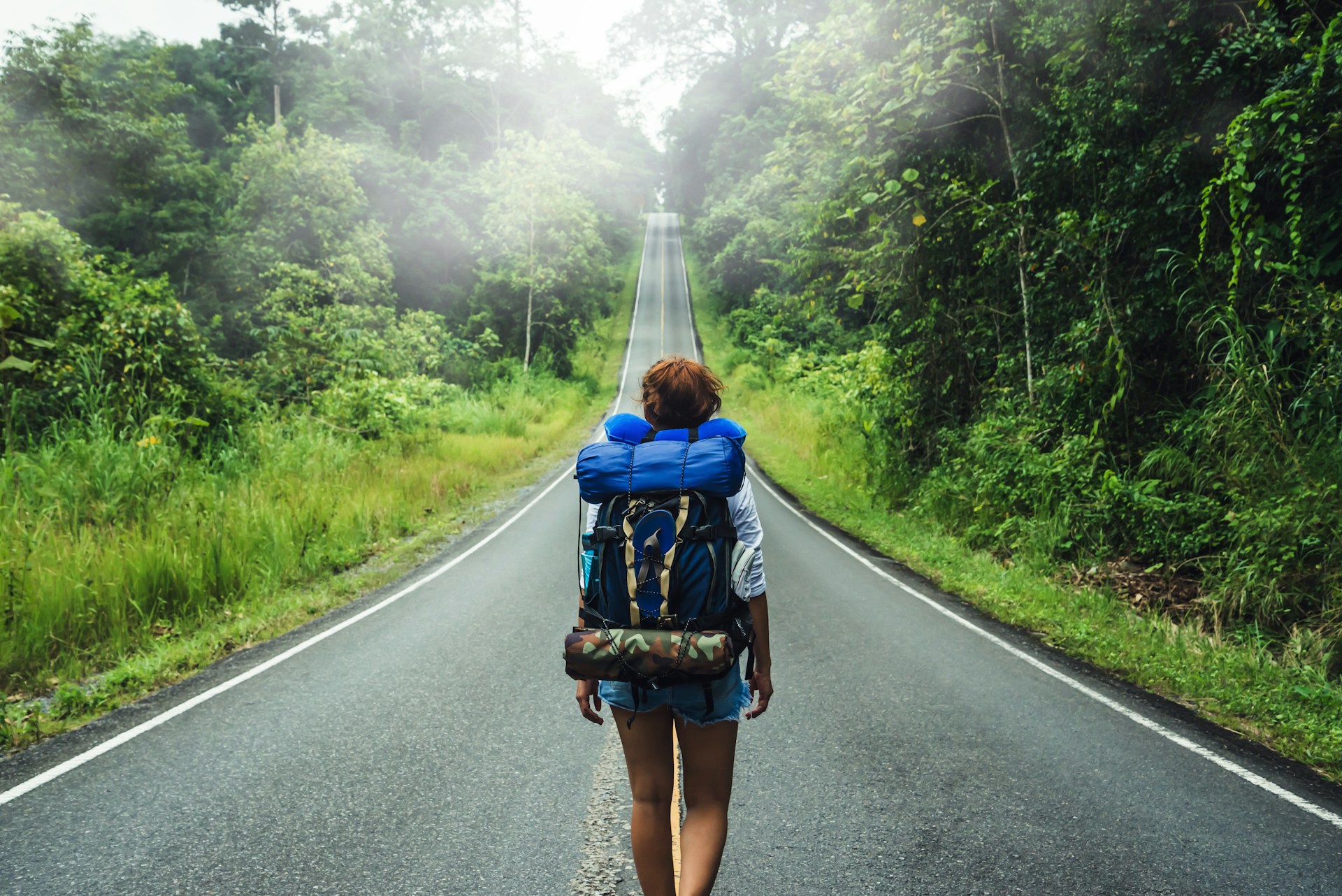Table of Contents
Packing a travel backpack is an art that mixes minimalism with meticulous organization. Start by choosing a backpack with multiple compartments, a padded laptop compartment, and comfortable padded shoulder straps. Every space in your backpack should be used, with gear arranged to maintain a good weight distribution. This balance ensures a comfortable load, keeping the center of gravity close to your body.
Essential Steps Before Packing Your Backpack
Before packing, understand the carry-on guidelines, including size and weight restrictions. Choose an expandable backpack that fits under the seat or in the overhead compartment. A well-packed backpack can help you pass through security checks more efficiently.
Understanding Airline Carry-On Backpack Rules
Before heading to the airport, make sure you’re familiar with the airline’s carry-on backpack rules. Dimensions and weight limits can vary, and adhering to these rules is essential to avoid check-in issues. Airlines often have strict policies on the number of items allowed on board, including liquid toiletry restrictions. By understanding these rules, you can ensure that your backpack won’t cause delays or additional fees at boarding.
Packing Strategies

A strategic approach to packing maximizes the use of your backpack. Start with a clear plan. Decide what’s essential for your trip, then arrange for easy access and optimal weight distribution. This method simplifies the process and ensures you can find what you need without unpacking everything.
Choosing the Perfect Travel Backpack
The ideal travel backpack balances form and function. Look for one with comfortable straps, a laptop compartment, and enough space for rolled items. These features are important for travelers carrying essentials on international trips. A backpack that opens like a suitcase provides easier access and organization on the go.
Deciding What to Bring on Your Journey
Packing your backpack can be challenging. Prioritize multipurpose items or those that can be layered for changing weather. An indispensable item is a laundry bag that separates clean items from dirty items. The goal is to pack only what you need, leaving space for souvenirs and unexpected finds.
Making a Checklist
A checklist is essential for avoiding overpacking. List clothing, toiletries, and electronics, then add items for the destination’s climate and culture. Check off each item as you pack to avoid forgetting anything. It also helps visualize the backpack’s space and adjust as necessary.
Deciding What to Leave Behind
Deciding what to omit is as important as what to bring. Heavy books, excessive gadgets, and ‘just in case’ items often go unused and add unnecessary weight. Instead, opt for digital reading material and multipurpose gadgets. Every ounce counts when you’re carrying your life on your back.
Embracing the Philosophy of Packing Light
To embrace packing light, consider each item’s necessity and versatility. It’s about saving space in your backpack, freedom of movement, and peace of mind during your travels. Carrying less brings ease in transit and spontaneity in exploring. Plus, less to keep track of means less stress and more enjoyment.
Organizing Travel Essentials
Once you’ve picked your essentials, it’s time to organize. Start with the heaviest items at the bottom of your backpack, near your hip belt, for proper weight distribution. Use mesh pockets and straps on the exterior for quick access. Packing cubes can group items, making them easier to find without rummaging.
The Battle of Rolling vs Folding Clothes
When organizing clothes, the rolling vs. folding debate arises. Rolling saves space and reduces wrinkles, which is popular among travelers. Folding works for stiffer, structured garments. Assess the fabric and choose the best method for each piece.
Advantages of Rolling Your Clothes
Rolling clothes have clear advantages for casual, flexible items. It compresses your clothes, allowing you to fit more into your backpack. Rolled items wrinkle less than folded ones, keeping your travel wardrobe ready to wear. For midweight items like T-shirts and jeans, rolling is the preferred method for experienced travelers.
When Folding is the Better Option
Folding is better for bulkier or structured items like dress shirts or blazers to maintain their shape. Heavy sweaters or jackets might take up less space when folded flat. The key to efficient packing is to fold these items neatly and place them on top of the rolled clothing.
Using Packing Cubes for Maximum Efficiency
Packing cubes are game changers for organizing smaller items like tank tops, accessories, and electronic gadgets. They compartmentalize storage, making it easier to find items without unpacking your entire backpack. They also keep belongings neatly folded or rolled, preventing shifting and wrinkling during transit.
How to Organize Packing Cubes in Your Backpack
Organizing packing cubes in your backpack starts with categorization. Dedicate each cube to a type of clothing or gear, like one for undergarments, another for shirts, and one for cords and chargers. This method streamlines packing and simplifies unpacking or accessing items during your travels.
Smart Packing for Space Optimization
When you pack light, every square inch of your backpack is valuable. To maximize this space, envision your bag as a puzzle where each item has its place. Start with the bulkiest items, like shoes, at the bottom to create a stable base that aligns with your center of gravity for a comfortable carry.
Mastering Weight Distribution for Comfort and Balance
Mastering weight distribution in your backpack is essential for comfort and balance. Heavy items should be positioned close to your back, around your natural center of gravity just above your hips. This placement ensures the bag’s weight is supported by your core muscles, reducing strain on your shoulders and back. Keeping your pack light also makes it more comfortable to carry, especially during long treks or in busy airports.
Maximizing Your Backpack
Maximize your backpack’s space by using every available inch. Tuck socks and undergarments into gaps and wrap fragile items with clothes for padding. Utilize the inside of shoes for small items. This approach maximizes capacity and keeps belongings organized.
Using Pockets and Straps for Extra Storage
The pockets and straps of your backpack are for more than just show; they’re strategic storage solutions waiting to be utilized. Side pockets are perfect for items you need on the go, like water bottles or maps. Straps can hold items that don’t fit inside, such as a tripod or a rolled-up jacket. For handy items like hand sanitizer, use the smaller compartments or lash them onto external loops. This way, you avoid searching through your pack and keep your essentials within reach.
Special Packing Tips for Different Travel Situations

Whether you’re traveling abroad or going on a weekend getaway, each scenario requires a unique packing approach. International travel requires tech gadgets and power adaptors, while short trips demand a minimalist mindset with versatile clothing and gear. Anticipate your destination’s demands and adapt your packing strategy to ensure you’re prepared for any adventure.
Packing for International Travel: Beyond Basics
International travel involves extended time away from home, so smart packing is crucial. Consider items for the climate and cultural norms of your destination, and the availability of certain products abroad.
Traveling With Musical Instruments
Traveling with musical instruments adds complexity to packing. Each airline has its own rules, so check in advance. Smaller instruments should fit in your carry-on allowance, while larger ones may need special arrangements. Protect the instrument in a hard case and consider insurance for peace of mind during international travels.
Packing for Short Trips: Keeping It Light and Simple
For short trips, pack light and simple. Focus on essentials and avoid overpacking “nice to have” items that often go unused. For instance, a versatile rain jacket can serve as both waterproof wear and a windbreaker. Pack a couple of pairs of socks and mix and match clothing for outfit options. This strategy saves space and simplifies decision-making while on the move.
Choosing Versatile Clothing and Essentials
When choosing travel clothing, prioritize versatility. Look for items that serve multiple purposes, like pants that convert to shorts or a shirt that doubles as a light jacket. Opt for lightweight, layerable clothes to adapt to weather conditions. These choices offer flexibility and reduce packing volume, freeing up backpack space for essentials.
Securing Your Belongings for Safe Travel
Keep your belongings secure for worry-free travel. Choose a backpack with lockable zippers and use a TSA-approved padlock for added security. Wear your backpack on your front in crowded spaces to deter pickpockets. Stay vigilant in tourist hotspots where thieves target easy marks. These precautions will help keep your valuables safe and your mind at ease.
Securing Your Backpack from Theft
To minimize theft risk, get a backpack with anti-theft features such as hidden zippers, slash-proof materials, and RFID-blocking pockets to protect your travel documents. Be mindful of your surroundings and keep your backpack in sight, especially in crowded areas. For extra peace of mind, wear your backpack with the zippers facing inwards and use carabiners to secure zipper pulls.
Including a Laundry Bag for Dirty Clothes
Using a laundry bag in your packing routine helps manage dirty clothes on the move, separating worn items from clean ones to prevent odor transfer and keeping your backpack organized. Choose a lightweight and easily compressed laundry bag that takes up minimal space. This simple addition can make a big difference in maintaining order and hygiene on your trip.
Best Practices for Travel Backpacks
For the ideal travel experience, choose a backpack with padded shoulder straps, a hip belt, and sternum straps for weight distribution and comfort during long wear. Interior pockets organize small items, and a padded laptop compartment protects electronics. A dedicated toiletry bag keeps liquids separate for easy airport security.
Prioritize Versatility for Day-to-Day Backpacks
When choosing a day-to-day backpack, prioritize versatility. Look for a lightweight yet durable bag with enough compartments to keep essentials organized. Features like a water bottle holder, key clip, and easy-to-access pockets can make a significant difference. A versatile backpack should transition seamlessly from city streets to nature trails, making it an indispensable tool for everyday exploration.
Choose City-Hopper Backpacks for Urban Exploration
A city-hopper backpack is your best ally for urban exploration. It’s designed to blend in with the urban environment, offering style and functionality. Look for padded compartments for gadgets, reflective elements for visibility, and water-resistant fabrics to protect against city grime and sudden showers. A sleek design helps you navigate crowded spaces without sacrificing carrying capacity.
Wrapping up Backpack Packing Like a Pro
As you finalize your backpack packing, remember to prioritize convenience and necessity. Ensure your aid kit is accessible and your carry-on bag meets airline requirements to avoid last-minute gate-checking. If you’ve chosen to roll your clothes, confirm that this method maximizes space and minimizes wrinkles. Every item should be thoughtfully placed for the journey ahead.
Before you zip up and head out, take a moment to review your travel tips to ensure you haven’t forgotten anything. Take photos of your backpack’s contents in case you need a visual reminder or need to file a claim for a lost bag. Now, with your backpack ready, you’re set to embark on your next adventure, knowing you’ve packed like a true travel aficionado.




